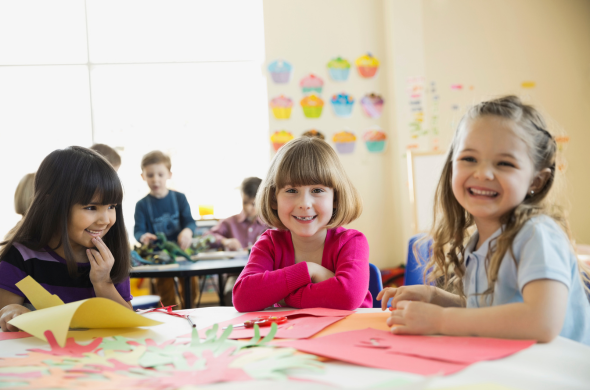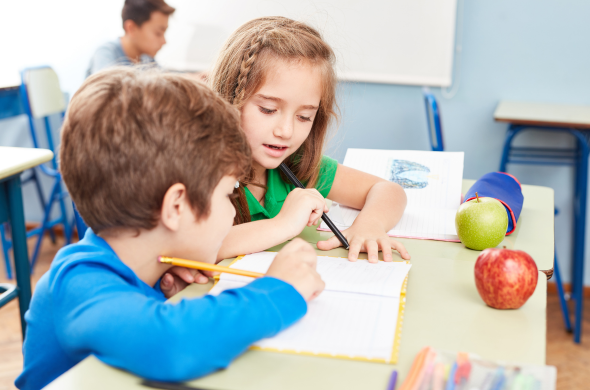How to Teach Children Goal Setting
Goal setting is an important skill that can help children gain confidence, perseverance, and a growth mindset. As teachers, we can help our students learn how to set goals in a fun and interactive way.
When we help them set learning intentions that align to their own unique abilities, it empowers them to take ownership of their learning and celebrate their successes. The start of a new year is a perfect time to tackle this project!
In January, check in with each of your students to ask them questions and get them thinking about their strengths and talents and encourage them to set goals for themselves for the rest of the school year. It’s a wonderful way to connect with each of them personally and to encourage them to dream big.
Visualize Goals with Collages
Something I found helps to get my students thinking of what they are good at and how they would like to improve is to have them create collages. They use pictures, drawings, and words to both describe their talents and abilities and what they would like to accomplish as goals. These collages are like Vision Boards that help students reflect on what they care about and want to work towards.
We also work together to make goals for the class! I make a collage for our class goal and display it with all of the students’ collages in a visible location so they stay reminded of their goals and dreams.

Frame Goals with a SMART Template
After creating our collages, I help them make a plan to work towards one goal at a time. We use a SMART template to help us keep our goals Specific, Measurable, Achievable, Relevant, and Time-bound. Using a SMART template helps ensure students are making realistic goals and that they’re set up for success.
It can be very motivating and exciting for students to have a plan for their goal that includes ways to monitor and visualize their progress. Tracking milestones and achievements helps students stay focused on their goals and gives you the opportunity to celebrate their successes together as a class.

Track Goals with Checkpoints and Journals
One way to teach your students to track their goals is to have them draw a timeline with little checkpoints along the way of things to accomplish. These small checkpoints help them start small so it doesn’t seem overwhelming, and keeps them going when they can visualize how far they’ve come.
Using checkpoints is a great opportunity to teach your students that small steps can lead to big changes.
“Too often, we ask students to tackle their areas of greatest deficit prematurely. First, we need to have them build skills and confidence in an area that is genuinely important to them, and then they need to have a success experience. From small success, larger successes can be built.” – Maurice J. Elias, Rutgers University professor of psychology
I would also recommend that you use Goal Journals in your classroom to track success. A Goal Journal can be a fun way for your students to look back on all the things they have learned, to share ideas and common lists with each other, and more.
You can have your students use their Goal Journals for whatever works best for your classroom, but I would recommend you use them for things like:
- Notes of what they want to learn and do during the school year
- Personal and class goals
- Hopes and dreams
- Student created learning artifacts
- Growth timelines
- What you’re working on with your Studies Weekly Health and Wellness curriculum
Use Sticky Notes
Education consultant, Stephanie Toro, suggests having students make a simple goal every morning that they can accomplish that day.
“For a few minutes each morning, ask students to imagine and select a new task or skill they want to work on, then write it down or draw a picture on a sticky note. Each goal should be something simple that demonstrates a clear goal like ‘Listen to each other more.’ Because the note itself acts as a quick visual reminder, students can place it on the corner of their desk,” she says.
At the end of the day, you can ask students to place their sticky note into the Goal Journal. By week’s end, students can reflect on their goals and progress and share what wins they had with a goal buddy or class. Celebrating their wins often together as a class builds connections, comradery, and feelings of belonging and safety.
I would love to hear what ways you love to help your students get excited to set and work towards learning intentions and goals.
Warmly,
Debbie
